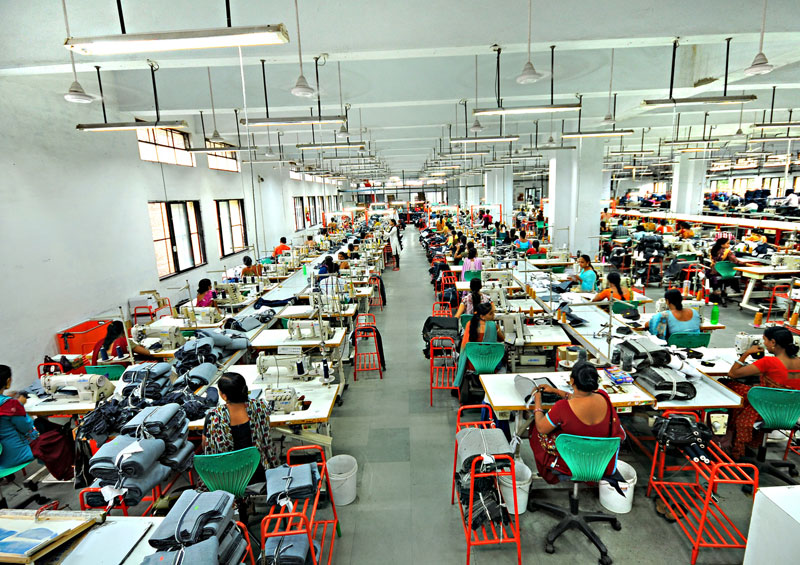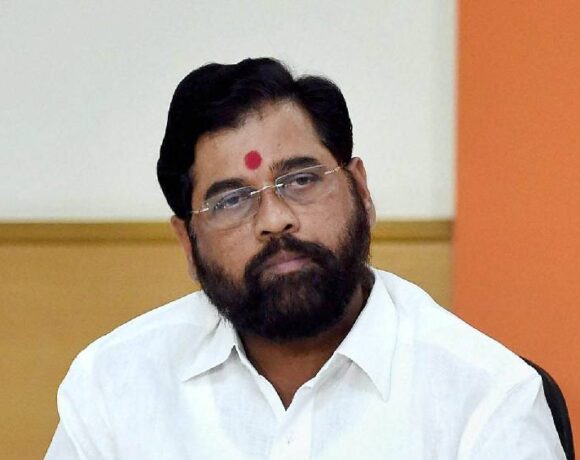PM MITRA Parks Aim To Make India A Global Textile Manufacturing Hub

The state and Central government backed mega textile parks under the PM MITRA (Pradhan Mantri Mega Integrated Textile Region and Apparel) Park Scheme is expected to generate satisfactory response from the textile industry, which is desperately trying to put up a cost competitive textile value chain.
PM MITRA parks represent a unique model where the Centre and state governments will work together to increase investment, promote innovation, create job opportunities and ultimately make India a global hub for textile manufacturing and exports. Nearly Rs 70,000 crore worth investment and employment generation of 2 million is envisaged through these parks. The Union government in March this year announced seven mega textile parks in the states of Tamil Nadu, Telangana, Gujarat, Karnataka, Madhya Pradesh, Uttar Pradesh and Maharashtra.
Experts are of the view that the Union government has learnt from the failure of the Scheme for Integrated Textile Parks (SITPs) introduced in 2005 and is now trying to bridge the gaps that existed in its previous approach. Most importantly, in PM MITRA scheme, both Central and state governments are significant stakeholders, which is something that will instil huge confidence in the minds of investors.
 The Centre and state government will set up SPV for each park which will oversee the implementation of the project. The Ministry of Textiles will provide financial support to the SPV in the form of Development Capital Support up to Rs 500 crore per park. Besides, a Competitive Incentive Support (CIS) of up to Rs 300 crore per park will also be provided to incentivise speedy implementation. In order to ensure additional incentives to the master developer and investor units, convergence with other GoI schemes will also be facilitated.
The Centre and state government will set up SPV for each park which will oversee the implementation of the project. The Ministry of Textiles will provide financial support to the SPV in the form of Development Capital Support up to Rs 500 crore per park. Besides, a Competitive Incentive Support (CIS) of up to Rs 300 crore per park will also be provided to incentivise speedy implementation. In order to ensure additional incentives to the master developer and investor units, convergence with other GoI schemes will also be facilitated.
Moreover, the state governments will provide contiguous and encumbrance-free land parcel of at least 1000 acres and will also facilitate provision of all utilities, reliable power supply and water availability and waste water disposal system, an effective single window clearance as well as a conducive and stable industrial/textile policy. The parks will offer an excellent infrastructure, plug and play facilities as well as training and research facilities for the industry.
“Unlike parks floated under SITP, in PM MITRA scheme, both state and Central governments are directly involved in terms of implementation as well as resources and this will certainly drive the speedy implementation of these parks going forward. With both Central and state governments involved, the industry will be much more confident this time around to invest in these parks,” says Sanjay Jain, past chairman, Confederation of Indian Textile Industry & Managing Director of TT Ltd, which has signed an MoU to invest in the proposed mega textile park in UP.
Inspired by the 5F vision of the Prime Minister (i.e. Farm to Fibre to Factory to Fashion to Foreign), the PM MITRA parks are a major step forward in realising the government’s vision of making India a global hub for textile manufacturing and exports. It is expected that these parks will enhance the competitiveness of the textiles industry by helping it to achieve economies of scale as well as attract global players to manufacture in India.
“The SITP scheme has been a learning curve. In PM MITRA, the approach is quite holistic. All the necessary ingredients are in place. These are much bigger in size and thus provide the much needed scale. Parks will offer an opportunity to create an integrated textile value chain, right from spinning, weaving, processing/dyeing and printing to garment manufacturing at a single location,” states Prashant Agarwal, co-founder and Joint Managing Director, Wazir Advisors.
 “PM MITRA parks will help in creating world-class industrial infrastructure that would attract large scale investment including foreign direct investment and encourage innovation and job creation within the sector. The textile industry should take advantage of these parks and create cost competitive production base to supply textiles and apparel to domestic as well as global markets,” states Mihir Parekh, Director, Textiles, Industries & Commerce Department, Government of Telangana.
“PM MITRA parks will help in creating world-class industrial infrastructure that would attract large scale investment including foreign direct investment and encourage innovation and job creation within the sector. The textile industry should take advantage of these parks and create cost competitive production base to supply textiles and apparel to domestic as well as global markets,” states Mihir Parekh, Director, Textiles, Industries & Commerce Department, Government of Telangana.
Telangana’s Kakatiya Mega Textile Park (KMTP) at Warangal is one of the seven mega textile parks to get approval under PM MITRA. Launched in 2017 by the state government and now part of the PM MITRA scheme, the park is spread over 1,000 acre with modern infrastructure facilities in place. KMTP has already drawn interest from mega anchors such as Kerala’s Kitex Garments, one of world’s largest kids apparel makers; South Korea’s textile giant Youngone Corporation and UP-based Ganesha Ecosphere with a total investment commitment of Rs 3,000 crore. Of this investment, Rs 500 crore worth assets are already in operation, while Rs 1,200-1,500 crore worth assets will start operation by March 2024. When fully operational, KMPT will generate 25,000-30,000 jobs.
 “No doubt, the new model of mega park scheme looks promising. But there is need for some more clarity as to how these parks and clusters will bring about benefits to individual players. An end-to-end blueprint will help industry players to make faster decision to take advantage of such locations and build up a globally competitive value chain,” says Kailash Lalpuria, Executive Director & CEO of Indo Count Industries, which has carried out an investment to the tune of Rs 1,100 crore in the last couple of years.
“No doubt, the new model of mega park scheme looks promising. But there is need for some more clarity as to how these parks and clusters will bring about benefits to individual players. An end-to-end blueprint will help industry players to make faster decision to take advantage of such locations and build up a globally competitive value chain,” says Kailash Lalpuria, Executive Director & CEO of Indo Count Industries, which has carried out an investment to the tune of Rs 1,100 crore in the last couple of years.
In 2017, Wazir Advisors commissioned a report for the Union Ministry of Textiles, which stated that SITP scheme failed to achieve its objectives due to factors like small size of the parks and lack of marketing support from the government. “The intended objective of SITP to foster the development of supply chain linkages and reduction in the cost of production by leveraging backward and forward integration in the value chain is yet to be realised as most of the operational parks are partially functional. The other reasons are lack of coordination among the units in the park, inability to attract the right investors, failure to achieve economies of scale and lack of collective approach in raw material sourcing and marketing,” says the report.
In March this year, CAG’s audit report on ‘Scheme for Integrated Textile Parks’ was presented in parliament. As per the audit report, there was a huge shortfall in achievement of targets by the parks sanctioned under the scheme. Even after a lapse of 16 years from the inception of the scheme, the actual achievement of the 56 completed/ongoing parks was 30 per cent in terms of employment generation, 50 per cent in terms of investments and 37 per cent in terms of setting-up of textile units, as against the targets set in the detailed project reports of the parks. There were delays ranging from 1 year to more than 10 years in completion of parks.
“Major reasons for delay in completion of parks were delay in obtaining statutory clearances, issues related to land allotment for the parks and weak financial strength of the Special Purpose Vehicles. Further, 43 per cent of the total sanctioned parks were cancelled. The cancellation of large number of parks and inordinate delays in completion of the parks defeated the purpose of the scheme to that extent,” says the CAG report.
“Very few parks were fully integrated textile parks having benefits of value chain and promotion of industrial clusters which would have led to reduction of production costs. A large number of parks were proposed with only one to two segments of the value chain,” the report observed.














